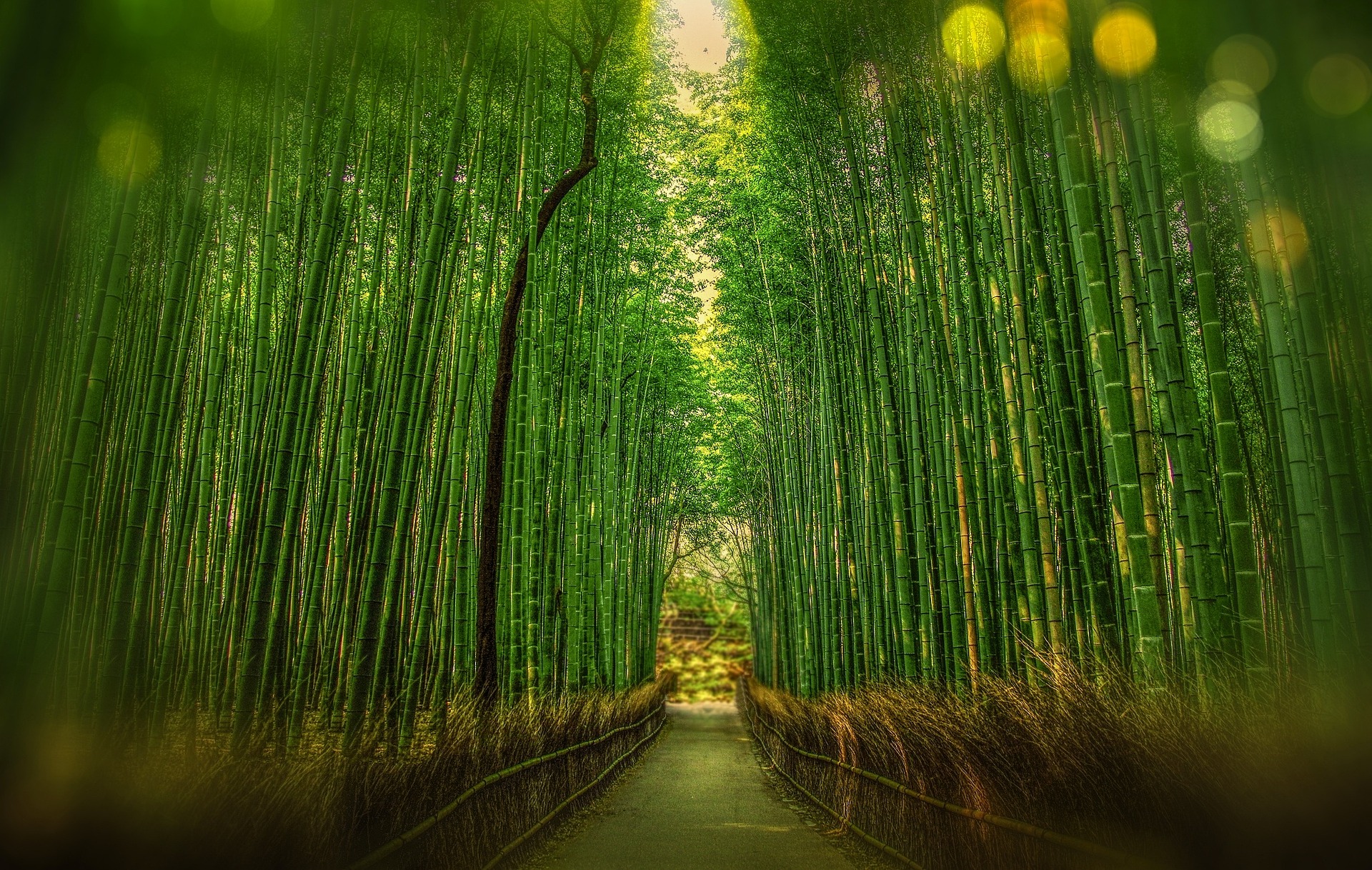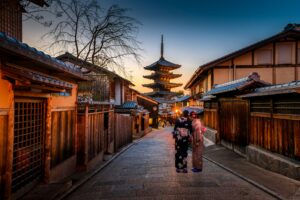Kyoto isn’t just temples and geishas. The real Kyoto? It’s the corners of tea fields where time stands still, the dimly lit izakayas that only locals know, and artisans working quietly in tiny workshops, keeping centuries-old traditions alive. It’s a city where the past doesn’t just meet the present — it whispers to it. This guide will take you deeper into Kyoto’s soul, where sustainability, authenticity, and culture are intertwined in ways tourists rarely experience.
Where to Stay: Hoshinoya Kyoto
Forget your standard luxury hotel. Hoshinoya Kyoto is a different beast — a riverside ryokan surrounded by forests that seem to belong in another century. This isn’t just about comfort; it’s about re-entering a slower rhythm. As you look out over the Oi River, sipping tea, the city and its chaos are miles away. The ryokan doesn’t just embrace tradition; it lets it breathe. Eco-conscious and peaceful, it’s a haven for those who know that luxury doesn’t need to shout.
Where to Eat: Monk
Monk isn’t your typical restaurant. It’s a small, unassuming spot tucked away in the back streets, where each meal is a meditation. You walk in expecting food, but what you get is an experience. The chef’s focus? Simplicity. Local ingredients turned into something extraordinary, cooked over a wood-fired oven. Every dish is seasonal and hyper-local — they don’t mess around with farm-to-table here; they live it. The food reflects Kyoto’s understated brilliance, each bite more meaningful than the last.
Where to Drink: Gekkeikan Sake Brewery
Located in Kyoto’s Fushimi Sake District, Gekkeikan Okura Sake Museum offers an authentic sake experience. One of Japan’s oldest breweries, Gekkeikan still uses pure spring water from Kyoto’s underground sources and traditional brewing methods dating back centuries. What makes this spot unique is its focus on sustainability, with organic and seasonal sakes that reflect the city’s balance of tradition and innovation. A tasting here isn’t just a drink; it’s a dive into Kyoto’s heritage.
Unique Cultural Experiences
- Tea Picking in Wazuka: Kyoto’s tea isn’t just about sipping the perfect cup; it’s about getting your hands dirty. Head to the tea fields of Wazuka, a small town that’s been growing green tea for over 800 years. Here, you’ll pick the leaves yourself, learning the meticulous craft behind one of Japan’s most revered exports. This isn’t a tourist show — it’s a way of life.
- Kintsugi Pottery Workshop: Broken pottery? Most people throw it away. In Kyoto, they mend it with gold. Kintsugi is the art of making something more beautiful after it’s been broken. Try your hand at this ancient craft, and by the end, you’ll realize it’s more than just pottery — it’s philosophy.
- Kyoto Nightlife: In the narrow alleyways of Pontocho, where the old and the new collide, you’ll find izakayas like Ipponmatsu serving up yakitori and sake. This isn’t polished tourist nightlife; this is Kyoto’s grit, where locals gather, and the evening is lit by lanterns, not neon lights.
Explore Hidden Temples
- Gio-ji Temple: Gio-ji is more moss than temple. Here, the ground seems to pulse with green life, wrapping everything in a soft, otherworldly glow. This is a temple of stillness — a place to escape the crowds, close your eyes, and let Kyoto wash over you.
- Otagi Nenbutsu-ji: If you’re looking for perfection, don’t come here. This place is rough around the edges. But those edges are where you’ll find its beauty. Otagi Nenbutsu-ji is home to over 1,200 quirky, hand-carved statues. Each one tells a different story, and together they create an odd, whimsical temple experience that breaks all the rules.

Arashiyama Bamboo Grove
You’ve seen photos of Arashiyama’s bamboo forest, but none of them do it justice. At dawn, before the tourists arrive, it’s a sanctuary. The towering bamboo sways gently in the breeze, creating a natural cathedral where you can almost hear the whispers of ancient Kyoto. For the full experience, wander up to Okochi-Sanso Villa, a quiet retreat that offers sweeping views of the city below.
Nishiki Market
Kyoto’s kitchen, Nishiki Market, is a 400-year-old sensory overload. Vendors hawk their wares — fresh tofu, matcha treats, pickled everything. This isn’t just a place to buy food; it’s where you experience Kyoto’s culinary history firsthand. It’s chaotic, but in the best possible way. If you’re brave, try some pickled vegetables that taste more like an experiment than a snack.
Kyoto’s Handcrafted Essentials
Forget mass-produced trinkets. In Kyoto, craftsmanship is still king. Visit Kyoto Design House to find items that have soul — hand-thrown pottery, painstakingly dyed textiles, and art that tells stories passed down through generations. Each piece is made by local artisans, some working in tiny workshops, others continuing traditions their families have honed for centuries. You’re not buying a souvenir here; you’re buying a piece of Kyoto’s gritty, unpolished heart.
Best Time to Visit
Kyoto unfolds its magic in spring, when cherry blossoms line every street, or in autumn, when fiery reds set the city ablaze. But, Kyoto’s charm isn’t seasonal — it’s a city that rewards exploration year-round. When you visit, forget the tourist checklist. Get lost in the backstreets, stop into a tiny izakaya where no one speaks English, and sip a sake that’s never seen an export label. Kyoto will reveal itself slowly — but only if you let it.

